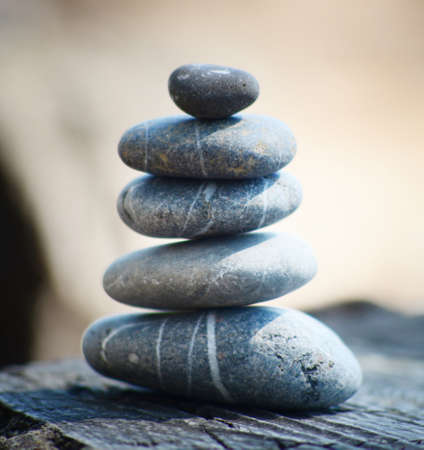Introduction to Runes in British History
The story of runes in Britain is one deeply intertwined with waves of migration, cultural exchange, and the ever-shifting landscape of identity across these islands. While runic writing is often associated with Scandinavia, its presence on British soil marks a fascinating intersection between local tradition and external influence. The earliest runes arrived with Germanic settlers during the 5th and 6th centuries, following the decline of Roman rule. These newcomers—Angles, Saxons, Jutes—brought with them not only their languages but also their distinctive forms of symbolic inscription. Over time, these symbols adapted to British contexts, creating what is now referred to as the Anglo-Saxon futhorc.
Runes were far more than mere letters; they were imbued with spiritual and practical significance. Used for commemorative stones, personal talismans, and even everyday objects, runic inscriptions provide invaluable insights into early medieval beliefs and social structures. This legacy continues to shape contemporary interpretations of runes in Britain, where they are studied both as linguistic artefacts and as touchstones for broader questions about heritage and identity. As we begin our exploration of the materials used for runes—from enduring stone to ephemeral bone—it is essential to situate them within this complex historical tapestry that has shaped their meaning through centuries.
Stone as the Foundation: Early Runic Inscriptions
When examining the origins of runic inscriptions within British tradition, stone emerges as the fundamental and most enduring medium. The permanence and resilience of stone made it an ideal canvas for early runes, ensuring that messages, memorials, and magical symbols could outlast generations. Across Britain, stones bearing these ancient characters have been uncovered at various notable archaeological sites, each offering a unique insight into the interplay between geology, craftsmanship, and cultural identity.
Geological Suitability of Stone in Britain
The choice of stone for rune carving was far from arbitrary. Local geological resources greatly influenced which stones were selected. Hardwearing materials such as sandstone, granite, and slate were frequently used due to their abundance and workability in different regions. The following table illustrates some typical stones used for runic inscriptions alongside their geological properties:
| Type of Stone | Region | Properties |
|---|---|---|
| Sandstone | Northern England & Scotland | Relatively soft, easy to carve, weathers gracefully |
| Granite | Cornwall & Devon | Extremely durable, challenging to inscribe but long-lasting |
| Slate | Wales & Cumbria | Smooth surface, splits easily for flat slabs |
| Limestone | Yorkshire & Lincolnshire | Soft, workable, used for detailed carvings |
Notable Sites of Runic Stone Inscriptions
The landscape of Britain is dotted with significant runic stones. Lindisfarne in Northumbria boasts cross-slabs with both Christian iconography and Norse runes. In the Isle of Man, numerous Viking Age stones showcase a blend of Scandinavian and local motifs. The Ruthwell Cross in Dumfriesshire stands as an iconic example where religious narrative and runic script coalesce on a monumental sandstone pillar.
Cultural Symbolism of Stone in Rune Tradition
Beyond practicality, stone held profound symbolic meaning. Its enduring nature mirrored the desire for permanence in remembrance—whether commemorating the dead or marking sacred spaces. Carving runes into stone was more than record-keeping; it imbued messages with authority and sanctity. In British folklore, certain stones were believed to be conduits for spiritual power or boundary markers between realms—a belief echoed by their use in ritual contexts.
![]()
3. From Timber to Tradition: Wooden Runes and Everyday Life
Britain’s lush woodland landscapes have always played a pivotal role in shaping local culture, and this is particularly evident in the materials chosen for runic inscriptions. Unlike the enduring stone monuments or the rare bone artefacts, wood was an accessible and versatile resource, deeply woven into the fabric of everyday life. The abundance of native trees—oak, ash, yew, and rowan—provided not only building material and fuel but also an ideal medium for crafting runes that were both functional and symbolic.
Wooden runes served a multitude of purposes within British communities. Their lightweight and portable nature made them practical for day-to-day use: merchants might have carved quick messages or trade agreements onto small wooden slips, while farmers could inscribe protective symbols on tools or doorposts to guard against misfortune. The relative ease with which wood could be shaped enabled a rapid production of amulets, charms, or tokens imbued with personal significance. In this way, wooden runes became an integral part of routine communication and ritual practice.
Beyond mere practicality, the choice of timber often carried layered meanings. Certain tree species were believed to possess inherent magical properties—yew symbolising death and rebirth, rowan offering protection from evil—which further amplified the rune’s power when used as amulets or in ceremonial contexts. This synergy between material and message reveals a distinctly British reverence for the natural world: crafting a rune from locally sourced wood was not just a matter of convenience but a conscious act of aligning with ancestral wisdom and landscape lore.
Thus, wooden runes bridge the gap between the extraordinary and the everyday, serving as both practical tools for communication and vessels of tradition imbued with cultural memory. Their ubiquity in archaeological finds—from riverside settlements to windswept hill forts—attests to their enduring presence in Britain’s runic heritage.
4. Bones and Antlers: Symbolism, Scarcity, and Social Status
While stone and wood formed the backbone of early British runic tradition, the use of animal bones and antlers introduced a distinct set of meanings and cultural implications. These organic materials were far more than convenient surfaces for inscriptions; they embodied layers of symbolism, marked distinctions in social hierarchy, and pointed to ritualistic purposes that went beyond ordinary communication.
Symbolic Significance of Bones and Antlers
The selection of bones or antlers for carving runes was rarely incidental. In many British contexts, animal remains signified connections to the spiritual realm or ancestral lineage. The inherent qualities of these materials—strength, durability, and their origin from living creatures—imparted additional meaning to the runic messages they bore. For example, antlers, shed cyclically by deer, could symbolise renewal or the cyclical nature of life and fate within Anglo-Saxon belief systems.
Scarcity and Value: A Matter of Social Status
Unlike stones found in abundance across the British landscape, suitable animal bones and antlers were comparatively scarce. Their procurement required either hunting prowess or access to domesticated livestock, both signifiers of status in early societies. This scarcity elevated the value of bone and antler artefacts, often reserving them for individuals of higher social standing or for uses with special ceremonial weight.
Comparison Table: Materials Used for Runes and Their Social Implications
| Material | Availability | Common Users | Typical Contexts |
|---|---|---|---|
| Stone | High | General population | Everyday communication, grave markers |
| Wood | Moderate | Crafters, everyday folk | Temporary messages, practical use |
| Bones/Antlers | Low | Nobility, shamans, skilled artisans | Ritual objects, status symbols, magical tools |
Craftsmanship and Ritual Contexts
The working of bone or antler demanded specialised skills—far surpassing those required for stone or wood. Tools had to be sharp and precise; mistakes could ruin a rare material. This elevated level of craftsmanship imbued each object with added prestige. Artefacts such as runic amulets or ceremonial staffs were sometimes inscribed with complex patterns or additional ornamentation, further underlining their importance within British society.
Ceremonial Usage and Magical Beliefs
Bones and antlers featured prominently in ritual contexts—whether as talismans worn for protection, implements used in divination practices, or offerings made to deities. Their organic origins were believed to enhance magical efficacy; some sources suggest that specific animals (such as stag or ox) imparted unique properties to the runes carved upon them. The intertwining of materiality and meaning thus reveals a sophisticated interplay between resource availability, technical skill, social structure, and spiritual practice within the British runic tradition.
5. Metal Matters: The Emergence of Runic Artefacts
As the British tradition of rune-making evolved, a significant shift occurred with the adoption of metal as a medium for runic inscriptions. This transition was not merely technological; it reflected changing social structures, trade dynamics, and notions of status within early British societies.
The Practical Appeal of Metal
Metal offered distinct advantages over earlier materials such as stone or bone. Its durability meant that runes could withstand the wear and tear of daily life or travel across great distances. Moreover, metals like bronze, silver, and gold were malleable enough to allow for intricate designs, making them ideal for personal items that bore both symbolic and practical significance.
Runes in Jewellery: Identity and Intimacy
The use of runes in jewellery—rings, brooches, pendants—became increasingly popular during the Anglo-Saxon period. These artefacts often served as personal amulets or tokens of identity, inscribed with names, blessings, or protective charms. The act of wearing runic jewellery signified more than mere adornment; it was an expression of personal belief and social belonging, intimately tied to the wearer’s status and heritage.
Weaponry: Power Etched in Metal
Runic inscriptions on swords, spearheads, and shields carried multifaceted meanings. On a practical level, they might denote ownership or craftsmanship. More profoundly, these inscriptions imbued weapons with perceived magical properties—offering protection in battle or invoking favour from ancestral spirits. The presence of runes elevated weaponry from functional tools to objects of prestige and power within warrior culture.
Trade and the Circulation of Prestige
The movement of metal runic artefacts along trade routes contributed to their significance. Objects bearing runes were exchanged not only as commodities but also as symbols of alliance and influence. The rarity and value of precious metals enhanced the prestige associated with these items, reinforcing social hierarchies while also facilitating cultural exchange across Britain and beyond.
The Interplay Between Practicality and Prestige
The adoption of metal for runic inscriptions thus encapsulates a fascinating interplay between utility and symbolism. While practicality motivated the choice of durable materials, the association with wealth and status ensured that metal runes occupied a special place in British tradition. Ultimately, these artefacts provide invaluable insights into how material culture shaped—and was shaped by—the evolving landscape of runic practice in Britain.
6. Cultural Significance and Evolution of Material Choices
The selection of materials for crafting runes in Britain was never arbitrary; rather, it reflected a dynamic interplay between cultural beliefs, resource accessibility, and evolving technologies. By systematically examining these factors across historical periods, we gain insight into how material preferences both shaped and were shaped by British tradition.
Shifting Beliefs and Symbolic Resonance
Initially, the choice of stone or bone for rune carving was deeply intertwined with spiritual symbolism. Stones, enduring and grounded in the landscape, represented permanence and ancestral connection. Bones, meanwhile, carried connotations of lineage and the cycle of life and death—a concept central to early British cosmology. As religious practices shifted from paganism to Christianity, the materials used began to reflect new values: wood, ephemeral yet renewable, aligned with Christian themes of resurrection and transformation.
Resource Availability Across Regions
Geographic variation played a decisive role in determining which materials predominated in different parts of Britain. In areas rich with flint or sandstone, such as East Anglia or Yorkshire, stones became the canvas for runic inscriptions. In contrast, communities along coastal regions or near forests often turned to driftwood or animal bones. This pragmatic adaptation ensured that rune-making remained an accessible practice despite regional disparities in natural resources.
Technological Advancements and Craftsmanship
The progression of toolmaking technology also influenced material choices over time. With the advent of metalworking during the Iron Age and beyond, artisans gained the ability to carve more intricate designs on harder surfaces. This technological leap not only allowed for greater artistic expression but also expanded the repertoire of available materials—incorporating metals like lead or bronze into ritualistic artefacts inscribed with runes.
Interplay Between Tradition and Innovation
The evolution of material preferences thus mirrored broader societal changes. While traditionalists might have clung to ancient stones for their perceived mystical properties, innovators embraced new methods and media as symbols of progress. The result was a living tradition—one that balanced reverence for ancestral ways with responsiveness to changing environmental conditions and social structures.
Continuity into Modern Times
Today, contemporary practitioners draw upon this rich heritage by selecting materials that resonate with both personal meaning and historical precedent. Whether using river stones collected from sacred sites or ethically sourced animal bones, modern rune-makers continue to honour the interplay between belief, environment, and technology that has defined British rune traditions through the ages.
7. Contemporary Reflections: Runes in Modern British Culture
The legacy of runic materials, from weathered stones to animal bones, continues to resonate within modern British culture, albeit in reimagined forms. Today, the tradition is not merely a relic of the past but a living influence that permeates various creative and spiritual domains.
Runes in Modern Arts and Crafts
British artisans and craftspeople have embraced the ancient practice of inscribing runes on diverse materials, drawing inspiration from historical artefacts while adapting to contemporary tastes. Stone carving remains prominent, with local workshops offering bespoke rune-engraved jewellery and garden ornaments. Artists often experiment with ethically sourced bone, wood from native trees like oak or yew, and even recycled metals, blending tradition with sustainability. The revival of handcrafts has led to the appearance of runes in pottery glazes, textile embroidery, and glasswork—each medium offering a unique interpretation of ancient symbols.
Spiritual Practices and Personal Symbolism
In Britain’s burgeoning spiritual communities, runes have found new significance as tools for meditation, divination, and personal empowerment. Modern practitioners frequently create their own rune sets using materials that resonate personally or environmentally—pebbles gathered from local rivers, driftwood from British shores, or even repurposed antler tips. This hands-on approach echoes the intimate relationship early Britons had with their landscape and resources. Workshops across the UK encourage participants to craft rune sets as an act of mindfulness and connection to ancestral heritage.
Integration into Contemporary Rituals
The use of runes in rituals has evolved beyond their original context. They are now incorporated into seasonal celebrations such as solstice gatherings or local folklore festivals. Here, materials matter: some groups favour traditional British stones for their perceived grounding properties; others opt for biodegradable options to honour ecological concerns. The material choice itself becomes a statement—of continuity, adaptation, or environmental awareness.
Cultural Reinterpretation Through Education
Museums and educational institutions play a crucial role in keeping the knowledge of runic materials alive. Interactive exhibits allow visitors to handle replicas made from stone, wood, or bone, fostering a tactile connection with the past. School programmes often include rune-making activities using locally sourced materials, ensuring the tradition evolves with each generation’s creativity and values.
In sum, the tradition of making runes from stone, bone, and other natural materials endures within modern Britain—not as static emblems of history but as dynamic elements woven into everyday life. Whether through art, spirituality, or education, these ancient practices are continually reinterpreted to reflect contemporary British identities and concerns.


